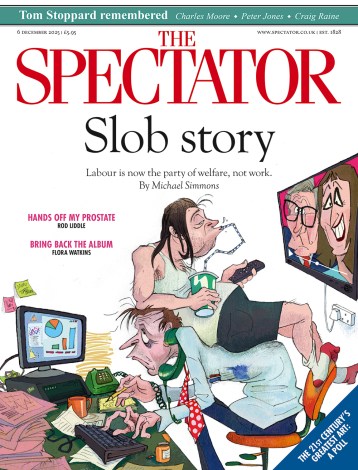Tamara Rojo programmed three female choreographers for her English National Ballet spring bill because, she said, she had never danced a ballet by a woman, and wanted to see what women would produce. Just the two begged questions here. First, that female choreographers are being stifled by institutionalised sexism in the ballet establishment. Second, that female choreographers, if allowed to see the light of day, would offer a differently thought, differently imagined argument from the general tenor of those pesky male choreographers who dominate the stage.
The first assumption has been swallowed whole by the luminaries and enablers of the art world who flooded Twitter after the première with ecstatic gasps, and by supportive critics who wrote approvingly that it proved that women can do choreography after all.
For the purposes of reacting correctly to ENB’s bill, it’s necessary to ignore British ballet’s founders, German and American dance’s radicals, many of the finest British choreographers of the past quarter-century, and start from the clean sheet of outright oppression. Is that really what Rojo thinks?
The other question is much more interesting, which is whether the three She Said choreographers would show up with something fresh and different from some supposedly standard male eye. I expect poor Wayne McGregor’s ears were burning as social mediatchiks spluttered that all that men want to do with women on stage is abuse them, bend them and splay them.
But in fact She Said had a school-of-that- genre piece in Fantastic Beings, the dimly lit, eagerly aerobic neoclassical drill of Aszure Barton. The busy moves of unisex dancers in lizard-green bodysuits under a vast blinking eye declared unexceptionally that women like a workout just as much as men do, and included a spinning climax in hairy costumes that resembled going through a car-wash. But Barton, fluent as she is, and notwithstanding a thoughtful solo for Ksenia Ovsyanick, shows nothing very distinctive from umpteen other school-ofs.
Much worse was Yabin Wang’s criminally wet treatment of Medea, M-Dao, a soppy exercise in the genre of beauteous women hobbled by life and men, having elegant nervous breakdowns amid fluttering silk sheets. Oh, please! I thought of Balanchine’s grown-up male-female conversations in Agon and Apollo and despaired that Rojo should let so spineless a piece into her liberation arena.
Luckily, the bill produced a proper keeper, the fresh, individual Broken Wings, by choreographer Annabelle Lopez Ochoa, director Nancy Meckler and composer Peter Salem (the team who created Scottish Ballet’s impressive A Streetcar Named Desire). It is a promising, carnival-like, often humorous feast of Mexicanismo, a portrayal of the painter Frida Kahlo and her transfiguration of multiple episodes of pain and loss into hallucinatory self-portraits, starring the gorgeous, unibrowed Rojo herself. It could be great, expanded to a full-lengther to allow its ideas to breathe.
All of it is tremendously costumed by Dutchwoman Dieuweke van Reij, the scenario drawing on Kahlo’s paintings and her ever odder, more masochistic self-imagery, her moods running authentically from mischief to anguish — a palette that Rojo handles with enchanting charisma and verve. As a bonus, the fabulous Irek Mukhamedov, now in his 50s, gamely clowned in a fat suit as Diego Rivera, partnering Rojo like a dream, though in a token role.
The following night in Cardiff came the defence case, a He Said night. The Mariinsky Ballet, in its only UK performances this year, flew in with a superb triple bill of Hans van Manen’s hot, amusing Five Tangos and Jerome Robbins’s smoochy Chopin ballet In the Night either side of a blistering account of Wayne McGregor’s Infra, a 2008 creation for the Royal Ballet. That’s the one with Julian Opie’s eyecatching digital people striding on a tickertape above the agonised dancers.
The Russians seized McGregor’s choreography with a will, applying richly soulful essences to those splays and wrenches that ballet dancers love to bits. The Amazonian redhead Yekaterina Kondaurova gave Lauren Cuthbertson’s original role a titanic, pent-up, magnificent weltschmerz; further bouquets to eager Ed Watson-like Alexander Sergeyev and ponytailed Renata Shakirova.
They all looked less engaged with the yesteryear of the Van Manen and Robbins pieces, which are delicious cocktail-hour creations evoking sophisticated loveplay from eras where strict conventions of male-female manners express all manner of emotional games. Treated too much as exercises in foreign dance style without subtexts, all we saw were bland men and lovely women, lapsing into the clichés that the ENB campaign isn’t wrong to attack. But it is not the choreographers’ fault.
Just space to cheer the Royal Ballet’s revival of Christopher Wheeldon’s The Winter’s Tale, a mostly masterly treatment of Shakespeare’s play about marital jealousy, full of top-notch stagecraft and atmosphere, even if Act 2 smiles at rather relentless length. The first cast Edward Watson, Zenaida Yanowsky and Lauren Cuthbertson can’t be faulted, but the moving authenticity of emotion generated by the casting of Thiago Soares and Claire Calvert as Leontes and Hermione showed the ballet’s text as capable of prompting wide-ranging interpretation. The mark of a true classic.






Comments